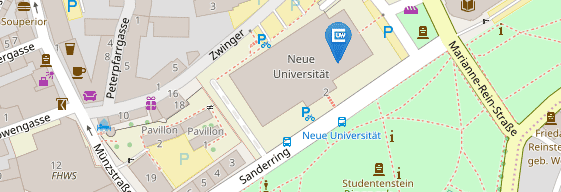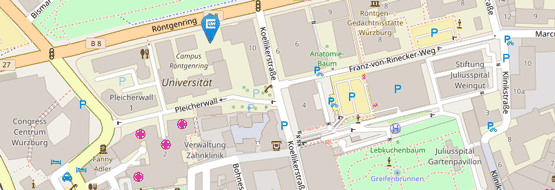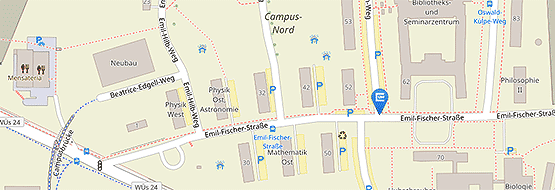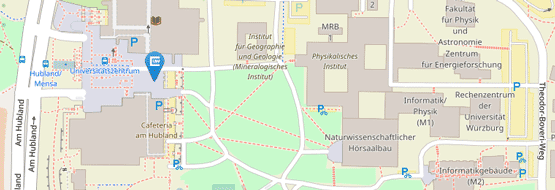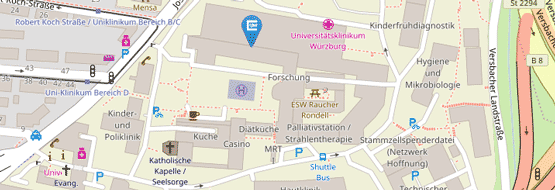Hybrid Teaching: Really the Worst of Both Worlds?
10/14/2025If hybrid teaching is to be successful, it all depends on the didactic design. This is shown in a new study by a team of researchers from Würzburg and Barcelona. In it, they identify three basic forms.
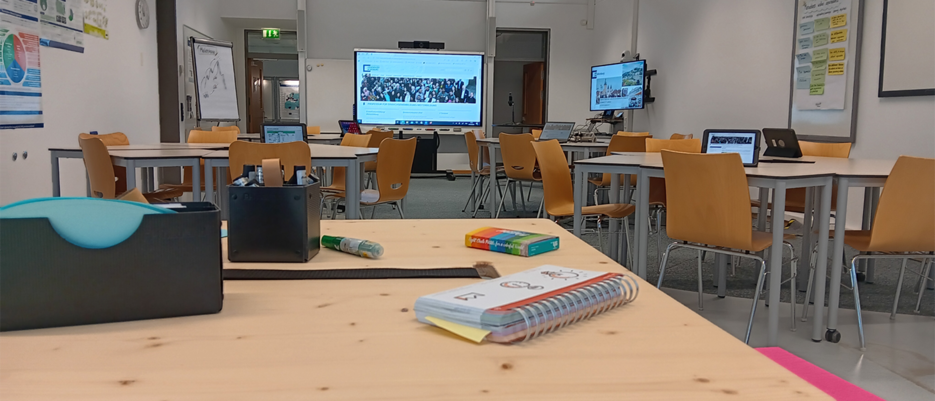
"Hybrid teaching is the worst of both worlds." This or similar comments are often made by university lecturers when it comes to courses in which students can participate both in the lecture theatre and online at the same time. These would lead to a lack of dialogue and unequal learning experiences for the students, as well as technical stress and excessive didactic demands on the part of the teacher.
A recent study by the Professorship of Adult Education/Continuing Education at the Institute of Education at Julius-Maximilians-Universität Würzburg (JMU) in collaboration with the University of Barcelona (UB) counters this: Hybrid formats are by no means "bad" per se - the decisive factor is rather their didactic objective and design as well as the respective context.
Interviews with Lecturers
To this end, Würzburg researchers Christina Hümmer, Professor Regina Egetenmeyer and Dr Lisa Breitschwerdt, together with Professor Esther Oliver and Professor Ramon Flecha from Barcelona, interviewed 20 university lecturers from all over Germany and analysed 31 examples of synchronous-hybrid learning spaces at German universities.
The results show that not all hybrid teaching is the same. Rather, three forms can be identified, which differ in terms of the degree of interactivity with students and the resulting design requirements. The results have been published in the international journal Computers & Education.
Unidirectional Hybrid Courses - The "Stream"
The first form identified is unidirectional, i.e. hybrid courses that only run in one direction. They were particularly widespread during the Covid-19 pandemic, but are still used today.
In the classic lecture format, a teacher imparts knowledge while the students mainly listen and observe. There is hardly any interaction between teachers and students or among students. This requires a media technology setup that is primarily designed to ensure that the teacher is clearly visible and audible and allows the events to be "streamed" online. Beyond this, however, no special adjustments to the didactic approach are necessary in order to organise the event as a hybrid.
Doubling Hybrid Courses - or: Divided Attention
In duplicating hybrid courses, students are divided into groups depending on the participation format - online or on site. The exchange takes place predominantly within these groups, the setting is "doubled". Project or group work is typical: The on-site group works together in the course room, while the online group works on a slightly adapted task in a breakout session, for example.
This format requires didactic planning that takes both modes of participation into account and addresses them in parallel. For example, by providing separate tasks and media for group work - such as flipcharts for the analogue group and padlets for the digital participants. In terms of media technology, visibility and audibility within the groups must be guaranteed.
Reciprocal Hybrid Courses: Learning Together Regardless of Location
The third form, reciprocal hybrid courses, is also the most interactive. Here, all participants work and discuss with each other - regardless of whether they are taking part on site or online. The prerequisite is either a modern, well-equipped course room or a flexible arrangement of laptops, projectors, cameras and microphones to ensure that all participants can be heard and seen.
Didactically, this format places high demands: Tried and tested teaching approaches need to be reviewed and replaced or supplemented with methods that specifically build bridges between the groups of participants. Formats such as energisers, group rallies, world cafés or informal "chat rounds" are often used, which not only promote interaction but also a sense of community. In order to manage complexity, it is worth sharing responsibility: Students can take on smaller tasks - such as providing technical support or moderating - thereby actively contributing to the design of the learning space and taking the pressure off the teacher.
Hybrid Formats as an Opportunity
All three forms aim to simplify access to higher education for people who are less flexible in terms of location for various reasons. Nevertheless, personal interaction on campus should not be neglected. The hybrid formats also open up new avenues for international cooperation.
However, as interactivity increases, so do the demands on the design of hybrid courses: Lecturers must skilfully use media technology solutions, develop suitable interactive methods and promote a sense of community across the different places of participation. How well this succeeds depends largely on the available infrastructure, human resources and the university's continuing education programmes.
Overall, the results make it clear "that hybrid courses are neither the 'worst of both worlds' per se nor a didactic panacea, but must be carefully designed depending on the objective and context," as Christina Hümmer summarises.
Part of an Interdisciplinary Project
The study is part of the DigiTaKS* project, under whose umbrella the JMU researchers are developing, piloting and researching synchronous-hybrid teaching-learning settings at universities. DigiTaKS* stands for "Digital key competences for study and work - development of a model for the transformative digital competence development of students". The project is funded by the Bundeswehr Centre for Digitalisation and Technology Research (dtec.bw) and financed by the European Union in the context of "NextGenerationEU".
In addition to the JMU Professorship for Adult Education/Continuing Education, the following are involved: the Professorship for Continuing Education and Lifelong Learning at Helmut Schmidt University Hamburg (project management and overall coordination), the Professorship for Adult Education at the University of Duisburg-Essen, WeTeK Berlin gGmbH and the Institute of Computer Science at Leipzig University.
Original Publication
Hümmer, C., Egetenmeyer, R., Breitschwerdt, L., Oliver, E., & Flecha, R. (2025). Forms of synchronous hybrid learning spaces in higher education - A type-building qualitative content analysis. Computers & Education. Advance online publication. https://doi.org/10.1016/j.compedu.2025.105440
Previous Studies
Lecture on the computer or in the lecture theatre? It depends!
Synchronous-hybrid teaching: How it can work better.
Other Recent Publications by the Team at JMU
Hümmer, C. & Egetenmeyer, R. (2025). More than just a question of media technology? The design of Synchronous Hybrid Learning Spaces: A literature review on current empirical findings in the German higher education landscape. Studies in Adult Education and Learning, 31(2), 1-22. https://doi.org/10.4312/as/22359


